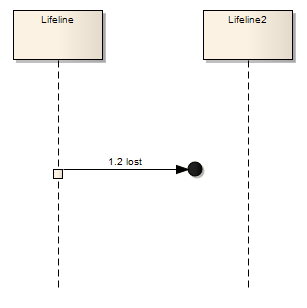


After reasoning and working with aspects in isolation, the aspect models eventually have to be combined with the base system model to produce an integrated system model.

Interaction diagrams include Sequence, Interaction Overview, Communication, and Timing diagrams. On the other hand, Activity, State Machine, and Interaction diagrams are used to model the behavioral view. Class, Object, Composite Structure, Component, Package, and Deployment diagrams can be used to represent the structural view of a system or aspect. Unified Modeling Language (UML) provides different diagrams to describe the different views. Therefore, a definition of an aspect depends on the view of interest. A system been modeled has several views including structural and behavioral views. In AOM, the aspect that encapsulates the cross-cutting behavior or structure is a model, just like the base system model it cross-cuts. This application of AO techniques much earlier in the development process has spawned a new field of study called Aspect- Oriented Modeling (AOM).
#SEQUENCE DIAGRAM IN ENTERPRISE ARCHITECT SOFTWARE#
This can greatly help software architects and developers to isolate, reason, express, conceptualize, and work with cross-cutting concerns separately from the core functionality (Ajila et al., 2010 Petriu et al, 2007). Research has shown that Aspect Oriented (AO) techniques can be applied to software design models. At this level, cross-cutting concerns result in model elements that cross-cut the structural and behavioral views of the system. In order to design and model such systems, software architects are faced with the problem of cross-cutting concerns much earlier in the development process. Modern software systems are huge, complex, and greatly distributed. For this purpose, the business value model is illustrated by the E3value model, whereas, the IFML model exhibits the front-end applications content, interface composition, user interaction and control behavior for several kinds of applications, such as web applications, mobile applications and desktop applications. We propose a disciplined Model-Driven approach for the e-business information system, which generates the IFML (Interaction Flow Modeling Language) model automatically in the PIM level from business value model in the CIM level, using the ATL transformation language. Therefore, our contribution in this paper is to shed more light on the first MDA transformation, which is the transformation from CIM to PIM levels. For that, the Object Management Group (OMG) proposes for the Model-Driven Architecture (MDA) approach three abstraction levels, namely Computation Independent Model (CIM), Platform Independent Model (PIM) and Platform Specific Model (PSM). In this sense, the model transformation has become one of the essential solutions to ensure competitiveness in the field of the software industry domain. Nowadays the software industry has known a significant growth, while the end-users have become very demanding. The purpose is to reduce the effort, time, and the development cost of projects as all transformations is automated, increasing the chance of being more competitive in the software industry.

The transformations are done automatically using the Atlas transformation language (ATL). Therefore, we produce the UML's behavior and interaction model in the PIM level, from the value-based requirements model in the CIM level. So, our defiance in this paper is to propose a disciplined method that generates the UML2 Sequence diagrams automatically from the E3value model. Most researchers put much focus on the PIM to PSM transformation because these levels have multiple common points, but they disregard the CIM to PIM transformation. For that, the Object Management Group (OMG) offers for the MDA approach three abstraction levels, which are Computation Independent Model (CIM), Platform Independent Model (PIM) and Platform Specific Model (PSM). Since the Model Driven Architecture (MDA) approach appearance, model's transformation has been considered as one of the main computing keys in the software industry, which grows exponentially to ensure competitiveness.


 0 kommentar(er)
0 kommentar(er)
